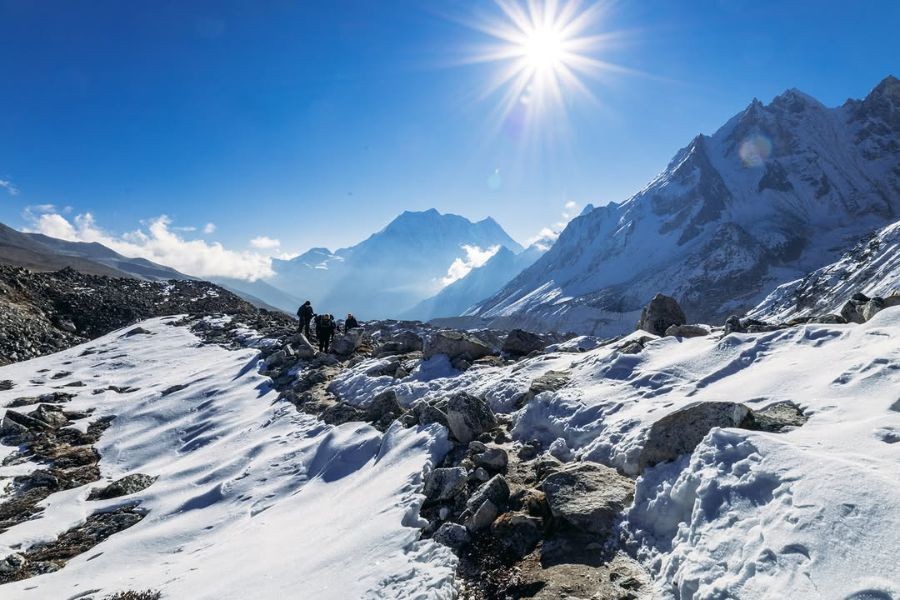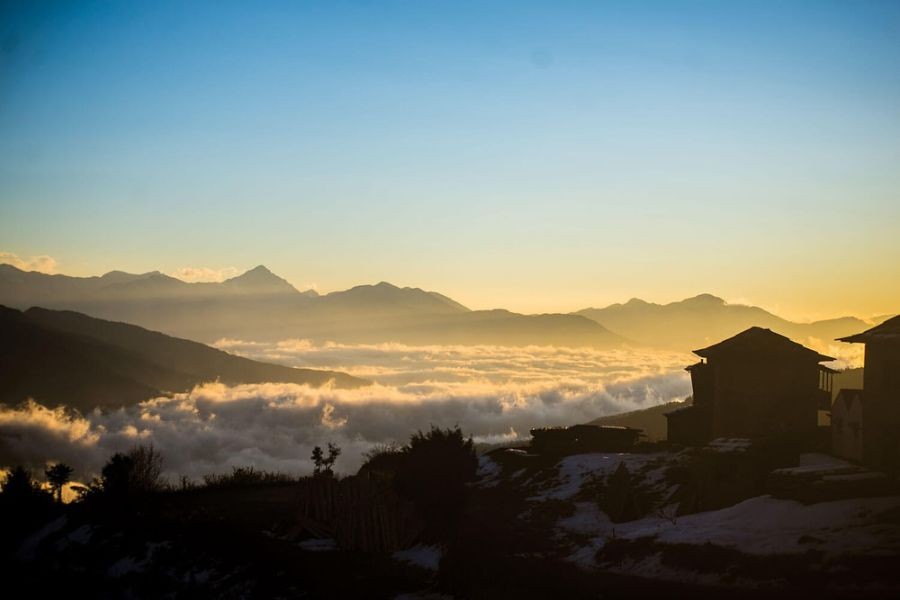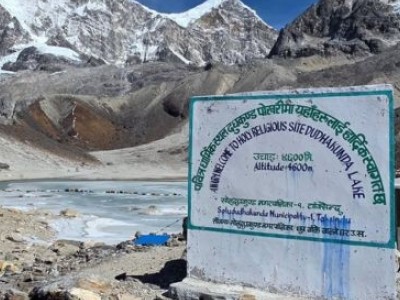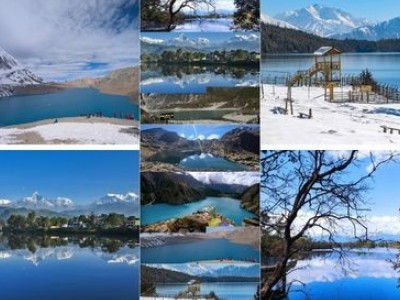Why Choosing the Right Trekking Company Matters
Nepal is a top destination for trekkers from around the world, with routes ranging from the iconic Everest Base Camp Trek to remoter paths in Upper Mustang; however, the quality of your experience will depend on choosing the right trekking partner.
The Importance of a Reliable Trekking Agency in Nepal
A reputable trekking company takes care of more than just permits and porters. They act as a safety net for trekking in remote mountain areas; altitude sickness, weather changes, and terrain issues can be unexpectedly random. Licensed trekking agencies in Nepal have certified guides who will follow protocols for mountain rescue, diagnose early symptoms of altitude sickness, and safely navigate trail conditions.
How the Right Company Makes Sure You are Safe, Comfortable, and Getting Good Value
When you book with a government-registered trekking company, you are benefiting from a group of people who have experience and who want to take care of you throughout the journey. These companies will have proper insurance, follow appropriate safety protocols, and have quality gear to handle the alpine environment. Beyond safety, they will also make sure you are comfortable camping, feeding you well at altitude, and masterminding all the logistics that will allow you to enjoy the spectacular views of the Himalayas.
Check Government Registration and Licenses

Importance of Being Registered with TAAN, NMA, and NTB
Nepal's tourism industry operates under strict regulations designed to protect trekkers and maintain service standards. Legitimate operators register with three key organizations:
- TAAN (Trekking Agencies Association of Nepal): The primary regulatory body for trekking companies
- NMA (Nepal Mountaineering Association): Essential for peak climbing expeditions
- NTB (Nepal Tourism Board): The official government tourism authority
Companies like Himalayan Ecological Trekking maintain current registrations with these bodies, demonstrating their commitment to professional standards and legal compliance.
How to Verify a Company's Legitimacy Online
Always check credentials through official sources before making your reservation. Check the TAAN website to confirm membership status, registration number, and operational history; request a copy of the license directly from the company - reputable tour operators will freely provide this information; lastly, confirm their physical office address in Kathmandu or Pokhara; you can rest assured that they are established companies and will not just be an online company.
Experience and Local Expertise Matter
Why Experience Counts in Himalayan Trekking
The Himalayas are places of incredible beauty, and they are also incredibly challenging and dynamic geographic features that can only be best tackled with experienced guides. Trekking companies that provide guides in these stretches of mountains have learned through time to comprehend the seasonal weather dynamics, create alternate travelling routes for when the trails become impassable, and maintain relationships with teahouse keepers along the popular routes, such as the Manaslu Circuit Trek and the Langtang Valley Trek.
The Value of Local and Certified Guides
Local guides provide cultural and geographical knowledge that is invaluable and that enhances your trekking experience; they have full fluency with the villagers in remote parts of the mountains, understand the local customs, and can share authentic knowledge of mountain communities. A certified trekking guide in Nepal has worked through intense programs of training, requiring completion of wilderness first aid, high-altitude physiology, environmental conservation, and rescue programs. These guides can identify acute mountain sickness in its early stages and how to implement acclimatization plans.
Read Reviews and Testimonials
Where to Find Authentic Customer Reviews

Research thoroughly before committing to any Nepal trekking guide company. Check multiple platforms, including:
- TripAdvisor: Read detailed trek reports and ratings
- Google Reviews: Look for patterns in feedback
- Facebook Pages: Observe how companies respond to inquiries
- Trekking Forums: Find unfiltered discussions on platforms like Lonely Planet's Thorn Tree
How to Spot Fake or Paid Reviews
Real reviews will include meaningful details about guides' names, trail conditions, accommodations, and specific challenges they experienced on the trek. Look for reviews that have generic terms of praise without substantive examples, clustered together in short timeframes, and a lack of photos. True trekkers will discuss both the good and minor inconveniences to give readers of the reviews a more balanced approach in reading about their adventures.
Compare Itineraries and Cost Transparency
What a Well-Structured Itinerary Includes
Quality itineraries demonstrate thoughtful planning and appropriate pacing. Look for:
- Proper acclimatization days: Essential for high-altitude treks like the Everest Base Camp Trek and Annapurna Circuit
- Realistic daily distances: Typically 5-7 hours of walking per day
- Contingency plans: Extra days built in for weather delays
- Detailed accommodation information: Specific teahouse or camping arrangements
- Meal plans: Clear indication of included and excluded meals
Hidden Costs and Fair Pricing Indicators

Dependable trekking operators in Nepal will provide you with detailed cost breakdowns as part of your price quote. Your price quote should indicate all the permits (TIMS card, National Park fees), guide and porter wages, lodging, meals, transport, and insurance costs. Be cautious of any unusually low prices; these often reflect low quality of services - such as low quality of accommodation, inexperienced or unqualified guides/staff, or other charges which may be imposed during your trek. Prices that are not low must pay for proper wages for mountain staff, quality trekking equipment, and adequate safety measures.
Focus on Safety Standards and Equipment
Importance of First Aid, Insurance, and Evacuation Support
Safety infrastructure separates professional operators from budget alternatives. Verify that your chosen company:
- Carries comprehensive first aid kits, including altitude sickness medications
- Provides emergency oxygen supplies for high-altitude treks
- Maintains helicopter evacuation insurance coverage
- Employs guides trained in wilderness first response
- Carries satellite communication devices for remote areas
Quality of Trekking Gear and Safety Protocols
Inspect equipment standards before departing. Professional companies provide well-maintained sleeping bags rated for appropriate temperatures, sturdy tents with proper waterproofing, and comfortable backpacks if you're not bringing your own. During treks to destinations like the Gokyo Lakes or Kanchenjunga Base Camp, quality gear becomes essential for comfort and safety.
Sustainability and Eco-Friendly Practices

Role of Responsible Tourism in Nepal's Himalayas
Nepal's mountain ecosystems face increasing pressure from tourism growth. Choosing an eco-friendly trekking company in Nepal helps preserve these fragile environments for future generations. Sustainable trekking practices minimize environmental impact while maximizing benefits to local communities.
How Eco-Conscious Companies Protect Local Culture and Nature
Leading operators implementing sustainable trekking in Nepal demonstrate commitment through:
- Waste management: Carrying out all non-biodegradable waste
- Local employment: Hiring guides and porters from trekking regions
- Cultural respect: Training staff to honor local traditions
- Environmental education: Teaching trekkers about conservation
- Community support: Contributing to schools and healthcare facilities
Himalayan Ecological Trekking exemplifies these principles by prioritizing environmental stewardship and supporting mountain communities through fair employment practices and community development initiatives. Their approach ensures your trekking experience contributes positively to the regions you explore.
Communication and Customer Support
Importance of Prompt and Clear Communication
Responsive communication signals professionalism and reliability. Quality trekking companies respond to inquiries within 24 hours, answer questions thoroughly, and provide clear information about booking procedures. They accommodate reasonable itinerary customizations and explain policies regarding cancellations, weather changes, and emergencies.
Pre- and Post-Booking Support Evaluation
Exceptional service extends beyond the trek itself. Before departure, the best Himalayan trekking agencies provide:
- Detailed pre-trek briefings
- Equipment checklists
- Altitude preparation advice
- Cultural orientation information
After your trek, they follow up to ensure satisfaction and address any concerns. This comprehensive support indicates genuine care for client experiences rather than purely transactional relationships.
Ask About Group Size and Trekking Style
Small Group vs. Large Group Experience
Group size significantly impacts your trekking experience. Small groups (4-8 people) allow for personalized attention, flexible pacing, and easier logistics in teahouses along routes like the Poon Hill Trek or Everest Panorama Trek. Large groups may offer lower per-person costs but can feel impersonal and move at the pace of the slowest member.
Custom/Private Treks vs. Fixed Departures

Consider your preferences regarding social dynamics and flexibility:
- Fixed departures: Join scheduled groups, potentially meeting fellow trekkers
- Private treks: Customize itineraries, dates, and pace according to your preferences
- Custom expeditions: Design unique routes combining multiple destinations like the Everest Three Passes Trek or Mardi Himal Trek
Discuss options with your trekking company to find the arrangement that matches your expectations and budget.
Look for Value, Not Just Price
Balancing Cost with Service Quality
The cheapest option rarely delivers the best experience. Budget operators often cut corners on guide expertise, accommodation standards, meal quality, and safety equipment. Mid-range to premium pricing typically reflects:
- Fair wages for guides and porters
- Better accommodation standards
- Comprehensive insurance coverage
- Quality meals and clean drinking water
- Experienced, English-speaking guides
What Makes a Company Worth the Price
Evaluate overall value by considering the complete package. Companies worth their pricing demonstrate:
- Transparent operations: Clear explanations of cost components
- Proven track record: Years of successful trek operations
- Safety investments: Modern equipment and trained personnel
- Positive reviews: Consistent praise from previous clients
- Added value: Cultural experiences, photography support, or flexible itineraries
When comparing Nepal trekking company reviews, look beyond price to assess the quality of experiences delivered.
Final Checklist Before Booking
Before confirming your Himalayan adventure, verify these essential points:
Documentation & Licensing
- TAAN, NMA, and NTB registration confirmed
- The company has a permanent office address in Nepal
- Registration numbers verified through official websites
Safety & Insurance
- Helicopter evacuation insurance included
- First aid and emergency equipment confirmed
- Guide certifications verified
Itinerary & Costs
- Acclimatization days properly scheduled
- All costs clearly itemized
- No hidden fees or surprises
- Cancellation policy understood
Reviews & Reputation
- Multiple positive reviews on independent platforms
- Recent feedback (within the past 12 months) reviewed
- Company responds professionally to inquiries
Sustainability
- Environmental practices are clearly stated
- Local community support demonstrated
- Fair wages for mountain staff confirmed
Communication
- Prompt responses to all questions
- Pre-trek briefing scheduled
- Emergency contact procedures explained
This checklist ensures you've thoroughly vetted your chosen trekking company before embarking on classic routes like the Annapurna Base Camp Trek or adventurous expeditions to Makalu Base Camp.
FAQs
How much does trekking in Nepal typically cost?
Trekking prices vary considerably depending on a number of factors, such as trek duration, location, and level of service. Popular treks like Everest Base Camp usually range in price from $1,200 - $2,500 per person, while shorter treks such as Poon Hill could range from $400 - $800. Private treks that cater only to you or your group usually have a higher price tag to account for the value of customizing your adventure.
What is the best time to trek in Nepal?
Generally, spring (March through May) and autumn (September through November) are the best times for trekking. The temperature will be comfortable, the visibility is usually 100%, and storms are usually not an issue during these times. Winter treks can be done at lower elevations, and the monsoon season (June through August) should be avoided, except for some areas that are rain-shadowed, like Upper Mustang.
How do I check if a trekking company is properly credentialed?
You should check the TAAN official website for membership, ask the trekking company for copies of their registration certificates, and then verify that the trekking company has an office space. A reputable company should have no hesitancy in providing documentation of credentials.
What should I look for in a trekking guide?
Look for guides with government certification, wilderness first aid training, mountain experience, strong English language skills, and positive reviews from previous clients. The best guides have strong technical skills and knowledge around local culture, and they simply love the mountains.
Are eco-friendly trekking companies more expensive?
Sustainable operators may charge marginally more to fund responsible practices that include proper waste management, fair wages for staff, and community contributors. But this is an investment that will positively impact the mountain environments and local people while ensuring authentic, quality experiences for you as a trekker.
Conclusion
Spotting the trekking company most suited for you in Nepal entails an investment of careful research, but that investment will pay you dividends while you are on an adventure in the Himalayan region. In other words, you can be a little less stressed on the trekking path by prioritizing, not just government-registered, but also experienced, transparent, safe, and environmentally responsible trekking companies. All these attributes contribute to a trek that is enjoyable, safe, and a community-positive experience for the mountain communities of Nepal. It’s a trek to inspire you when you experience sunrise over the Annapurna range, reach Everest Base Camp while standing below the world's highest mountain, or venture off to one of the remote valleys of Dolpo or Kanchenjunga, but when it comes down to it, your trekking company and trekking partner will make the experience indelible in your memory. Some companies like Himalayan Ecological Trekking exemplify that great experiences stem from a combination of professional expertise, coupled with genuine concern for the clients and the environment of the mountain.
Keep in mind that when choosing a trekking company in Nepal, you should try to look beyond price, to find a company that is a good 'fit' for you in terms of values, safety, and creating relationships with the Himalayas. While you will want to do your research, ask relevant questions, read recent reviews, and ultimately trust your gut regarding communication and responsiveness.
The Himalayas have welcomed trekkers for many years already, and with the right trekking company facilitating your journey, you can become a part of this continuous thread of trekking and mountain discovery, while also recognizing the cultural and environmental wonders NEPAL has to offer. Choose wisely, trek responsibly, and get ready for an adventure that will resonate and stay with you long after you’ve returned from our wonderful mountains.
Are you ready to start your Himalayan adventure?
Get in touch with Himalayan Ecological Trekking today to discuss your dream trek with experienced professionals who prioritize safety, sustainability, and an experience of a lifetime in the mountains.
Inquire Now: [email protected]
Expert Consultation: WhatsApp: +977 9851006023 (Bikesh)
.jpg)







